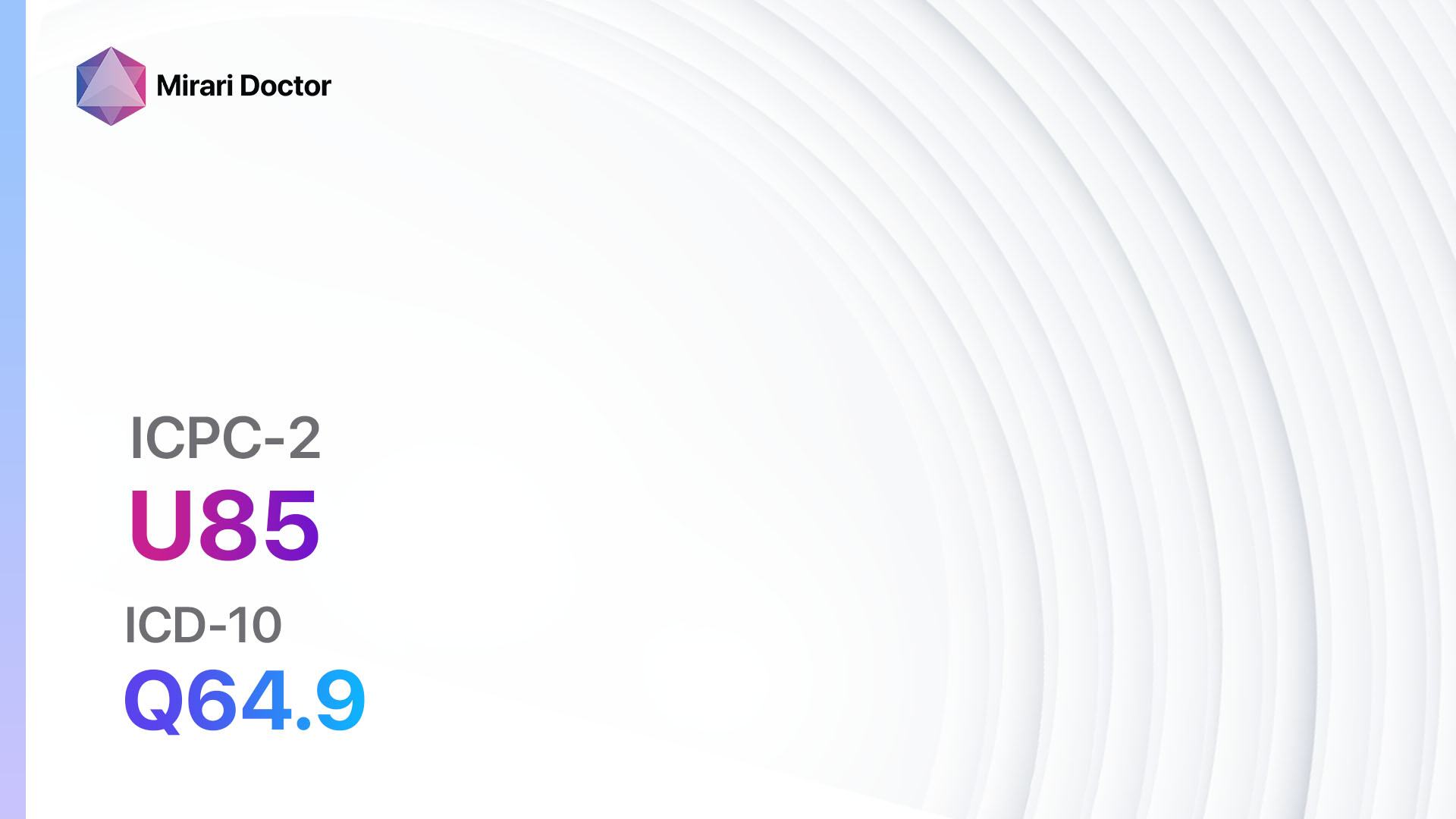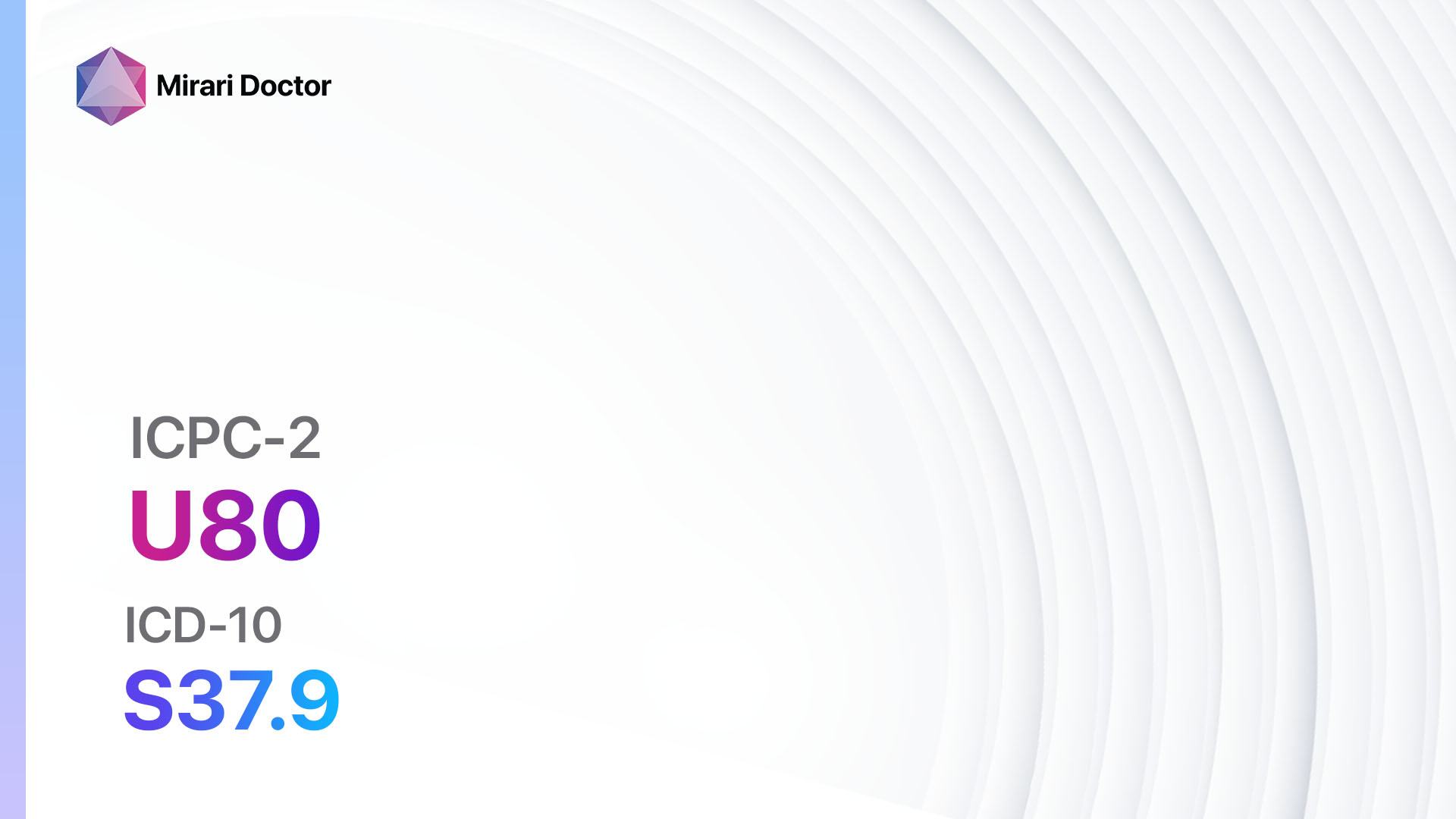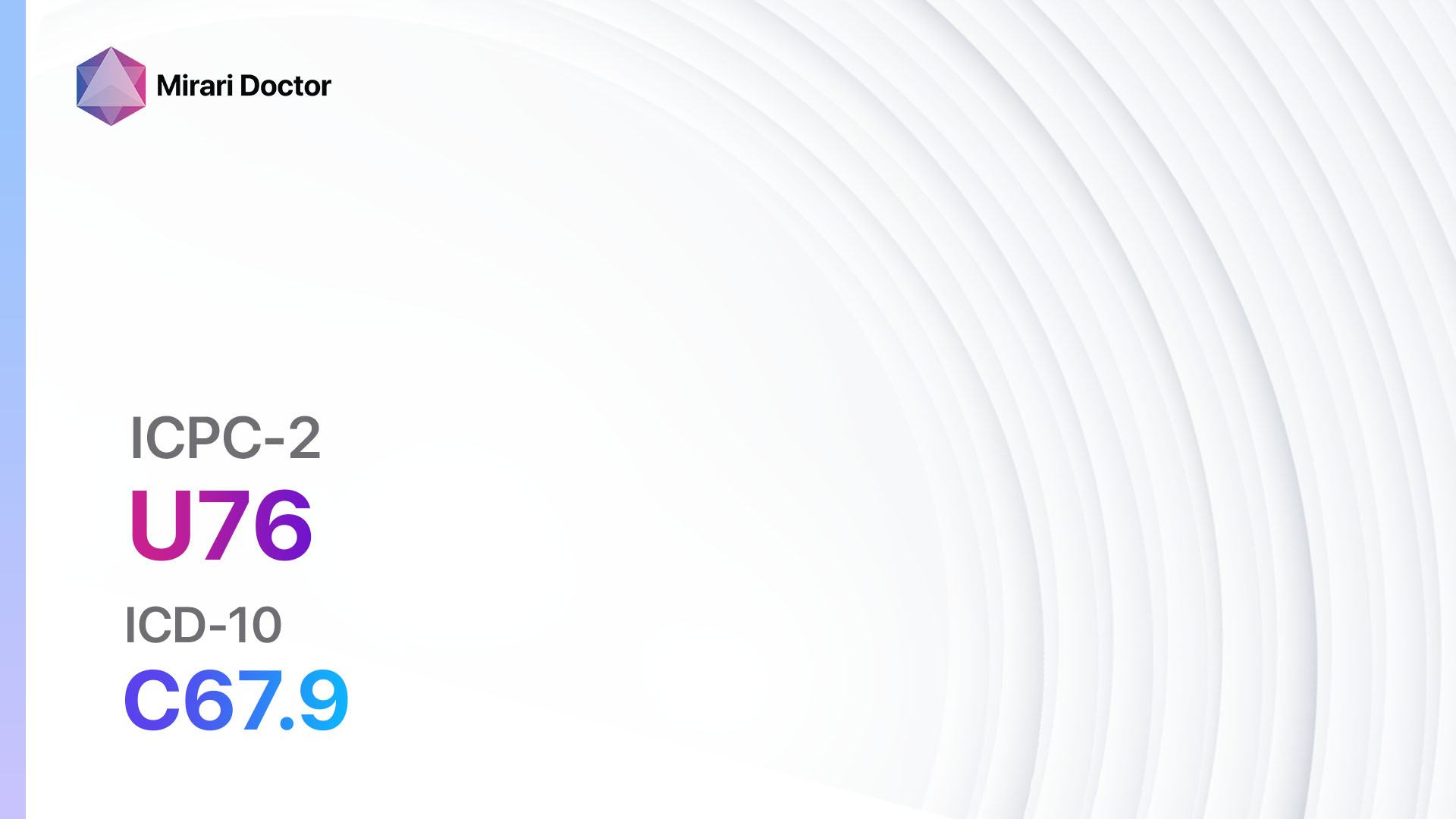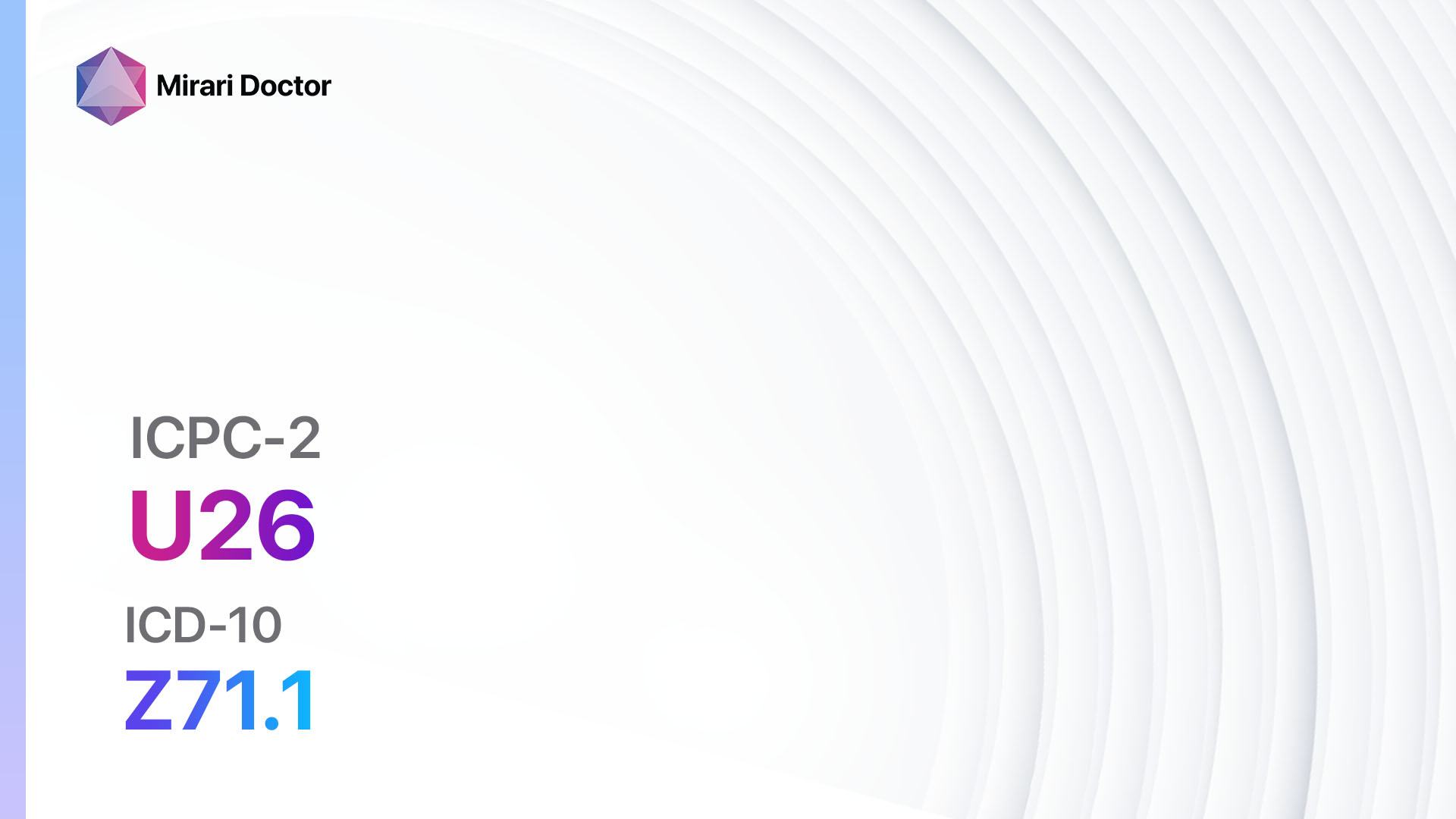
Introduction
Kidney symptoms or complaints can be indicative of various underlying conditions affecting the kidneys. These symptoms can range from mild discomfort to severe pain and may be accompanied by other signs such as changes in urine color or frequency[1]. It is important to identify and diagnose the cause of these symptoms to provide appropriate treatment and prevent further complications. This guide aims to outline the diagnostic steps, possible interventions, and lifestyle modifications for kidney symptoms or complaints.
Codes
- ICPC-2 Code: U14 Kidney symptom/complaint
- ICD-10 Code: R39.8 Other specified symptoms and signs involving the urinary system
Symptoms
- Abdominal pain: Dull ache or sharp pain in the lower back or sides
- Changes in urine: Blood in urine, foamy urine, frequent urination, or decreased urine output
- Edema: Swelling in the legs, ankles, feet, or face
- Fatigue: Feeling tired or weak
- Hypertension: High blood pressure
- Urinary tract infections: Frequent UTIs or recurrent kidney infections[2]
Causes
- Urinary tract infections: Bacterial infection in the urinary tract, including the kidneys
- Kidney stones: Hard deposits of minerals and salts that form in the kidneys
- Kidney infection: Bacterial infection that affects the kidneys
- Polycystic kidney disease: Inherited disorder characterized by the growth of cysts in the kidneys
- Glomerulonephritis: Inflammation of the kidney’s filtering units
- Kidney injury: Trauma or damage to the kidneys
- Diabetes: Chronic condition that affects the body’s ability to regulate blood sugar levels
- Hypertension: High blood pressure that can damage the kidneys over time[3]
Diagnostic Steps
Medical History
- Gather information about the patient’s symptoms, including the duration, severity, and any associated factors
- Identify any risk factors for kidney disease, such as a family history of kidney problems, diabetes, or hypertension
- Ask about any previous kidney infections, urinary tract infections, or kidney stones
- Inquire about any medications or supplements the patient is taking that may affect kidney function[4]
Physical Examination
- Perform a thorough physical examination, including checking blood pressure, heart rate, and temperature
- Palpate the abdomen to assess for tenderness or swelling in the kidney area
- Examine the lower back for any signs of trauma or injury
- Check for edema in the legs, ankles, or feet
- Assess for any signs of dehydration or fluid overload[5]
Laboratory Tests
- Complete blood count (CBC): To check for signs of infection or anemia
- Urinalysis: To assess for the presence of blood, protein, or infection in the urine
- Blood urea nitrogen (BUN) and creatinine: To evaluate kidney function
- Glomerular filtration rate (GFR): To determine the level of kidney function
- Electrolyte levels: To assess for any imbalances that may affect kidney function
- Imaging studies: Such as ultrasound, CT scan, or MRI to visualize the kidneys and identify any abnormalities[6]
Diagnostic Imaging
- Ultrasound: Non-invasive imaging technique that uses sound waves to create images of the kidneys
- CT scan: Provides detailed cross-sectional images of the kidneys and surrounding structures
- MRI: Uses magnetic fields and radio waves to generate images of the kidneys and detect any abnormalities
- Intravenous pyelogram (IVP): X-ray examination of the kidneys and urinary tract after injecting a contrast dye[7]
Other Tests
- Kidney biopsy: Removal of a small sample of kidney tissue for examination under a microscope
- Cystoscopy: Insertion of a thin tube with a camera into the urethra and bladder to visualize the urinary tract
- Voiding cystourethrogram (VCUG): X-ray examination of the bladder and urethra during urination[8]
Follow-up and Patient Education
- Schedule follow-up appointments to monitor kidney function and assess the effectiveness of treatment
- Educate the patient about the importance of maintaining a healthy lifestyle, including a balanced diet and regular exercise
- Provide information on medications, their dosage, and potential side effects
- Discuss the importance of managing underlying conditions such as diabetes and hypertension
- Encourage the patient to stay hydrated and avoid excessive alcohol consumption[9][10]
Possible Interventions
Traditional Interventions
Medications:
Top 5 drugs for kidney symptoms/complaints:
- Antibiotics (e.g., Ciprofloxacin, Trimethoprim/sulfamethoxazole):
- Cost: Generic versions can range from $3 to $50/month.
- Contraindications: Hypersensitivity to the medication, history of severe adverse reactions.
- Side effects: Nausea, diarrhea, allergic reactions.
- Severe side effects: Tendon rupture, severe skin reactions.
- Drug interactions: Warfarin, methotrexate, NSAIDs.
- Warning: Use with caution in patients with kidney impairment.
- Nonsteroidal anti-inflammatory drugs (NSAIDs) (e.g., Ibuprofen, Naproxen):
- Cost: Generic versions can range from $5 to $20/month.
- Contraindications: Active peptic ulcer disease, history of gastrointestinal bleeding, severe kidney disease.
- Side effects: Upset stomach, heartburn, increased risk of bleeding.
- Severe side effects: Gastrointestinal bleeding, kidney damage, cardiovascular events.
- Drug interactions: Anticoagulants, ACE inhibitors, diuretics.
- Warning: Long-term use can increase the risk of kidney damage.
- Angiotensin-converting enzyme (ACE) inhibitors (e.g., Lisinopril, Enalapril):
- Cost: Generic versions can range from $10 to $50/month.
- Contraindications: History of angioedema, bilateral renal artery stenosis.
- Side effects: Dry cough, dizziness, increased potassium levels.
- Severe side effects: Angioedema, severe hypotension, kidney failure.
- Drug interactions: Potassium-sparing diuretics, NSAIDs.
- Warning: Regular monitoring of kidney function and potassium levels is required.
- Diuretics (e.g., Furosemide, Hydrochlorothiazide):
- Cost: Generic versions can range from $4 to $20/month.
- Contraindications: Anuria, severe electrolyte imbalance, hepatic coma.
- Side effects: Increased urination, electrolyte imbalances, dehydration.
- Severe side effects: Severe electrolyte imbalances, kidney damage.
- Drug interactions: Lithium, digoxin, NSAIDs.
- Warning: Regular monitoring of kidney function and electrolyte levels is required.
- Proton pump inhibitors (PPIs) (e.g., Omeprazole, Pantoprazole):
- Cost: Generic versions can range from $10 to $30/month.
- Contraindications: Hypersensitivity to the medication, severe liver disease.
- Side effects: Headache, diarrhea, abdominal pain.
- Severe side effects: Increased risk of fractures, Clostridium difficile infection.
- Drug interactions: Clopidogrel, methotrexate, digoxin.
- Warning: Long-term use may increase the risk of kidney damage.
Alternative Drugs:
- Herbal supplements: Some herbal supplements, such as cranberry extract or dandelion root, may have potential benefits for kidney health. Cost: Varies depending on the specific supplement.
- Probiotics: May help maintain a healthy balance of gut bacteria and support kidney function. Cost: Varies depending on the specific product.
- Vitamin D supplements: May be recommended for patients with vitamin D deficiency and kidney disease. Cost: Varies depending on the specific supplement.
Surgical Procedures:
- Nephrectomy: Surgical removal of a kidney. Cost: $10,000 to $50,000.
- Kidney transplant: Replacement of a diseased kidney with a healthy kidney from a donor. Cost: $100,000 to $200,000.
Alternative Interventions
- Acupuncture: May help alleviate pain and improve overall well-being. Cost: $60 to $120 per session.
- Chelation therapy: Controversial treatment involving the administration of chelating agents to remove heavy metals from the body. Cost: $75 to $150 per session.
- Herbal supplements: Some herbs, such as nettle leaf or corn silk, may have potential benefits for kidney health. Cost: Varies depending on the specific supplement.
- Meditation and relaxation techniques: Can help reduce stress and promote overall well-being. Cost: Free to minimal cost.
- Yoga: May improve flexibility, reduce stress, and promote kidney health. Cost: $10 to $20 per session.
Lifestyle Interventions
- Dietary modifications: Reduce sodium intake, limit protein consumption, and increase fluid intake. Cost: Varies depending on food choices.
- Regular exercise: Engage in moderate-intensity exercise for at least 150 minutes per week. Cost: Free to minimal cost.
- Smoking cessation: Quit smoking to reduce the risk of kidney damage. Cost: Varies depending on the chosen method for quitting.
- Stress management: Practice stress-reducing techniques such as deep breathing, meditation, or yoga. Cost: Free to minimal cost.
- Maintain a healthy weight: Follow a balanced diet and engage in regular physical activity. Cost: Varies depending on food choices and exercise preferences.
It is important to note that the cost ranges provided are approximate and may vary depending on the location and availability of the interventions. It is recommended to consult with a healthcare professional for personalized treatment options and cost estimates.
Mirari Cold Plasma Alternative Intervention
Understanding Mirari Cold Plasma
- Safe and Non-Invasive Treatment: Mirari Cold Plasma is a safe and non-invasive treatment option for various skin conditions. It does not require incisions, minimizing the risk of scarring, bleeding, or tissue damage.
- Efficient Extraction of Foreign Bodies: Mirari Cold Plasma facilitates the removal of foreign bodies from the skin by degrading and dissociating organic matter, allowing easier access and extraction.
- Pain Reduction and Comfort: Mirari Cold Plasma has a local analgesic effect, providing pain relief during the treatment, making it more comfortable for the patient.
- Reduced Risk of Infection: Mirari Cold Plasma has antimicrobial properties, effectively killing bacteria and reducing the risk of infection.
- Accelerated Healing and Minimal Scarring: Mirari Cold Plasma stimulates wound healing and tissue regeneration, reducing healing time and minimizing the formation of scars.
Mirari Cold Plasma Prescription
Video instructions for using Mirari Cold Plasma Device – U14 Kidney symptom/complaint (ICD-10:R39.8)
| Mild | Moderate | Severe | |
| Mode setting: 1 (Infection) Location: 2 (Prostate & Uterus) Morning: 15 minutes, Evening: 15 minutes |
Mode setting: 1 (Infection) Location: 2 (Prostate & Uterus) Morning: 30 minutes, Lunch: 30 minutes, Evening: 30 minutes |
Mode setting: 1 (Infection) Location: 2 (Prostate & Uterus) Morning: 30 minutes, Lunch: 30 minutes, Evening: 30 minutes |
|
| Mode setting: 6 (Liver/Kidney Therapy) Location: 2 (Prostate & Uterus) Morning: 15 minutes, Evening: 15 minutes |
Mode setting: 6 (Liver/Kidney Therapy) Location: 2 (Prostate & Uterus) Morning: 30 minutes, Lunch: 30 minutes, Evening: 30 minutes |
Mode setting: 6 (Liver/Kidney Therapy) Location: 2 (Prostate & Uterus) Morning: 30 minutes, Lunch: 30 minutes, Evening: 30 minutes |
|
| Mode setting: 6 (Liver/Kidney Therapy) Location: 3 (Kidney, Liver & Spleen) Morning: 15 minutes, Evening: 15 minutes |
Mode setting: 6 (Liver/Kidney Therapy) Location: 3 (Kidney, Liver & Spleen) Morning: 30 minutes, Lunch: 30 minutes, Evening: 30 minutes |
Mode setting: 6 (Liver/Kidney Therapy) Location: 3 (Kidney, Liver & Spleen) Morning: 30 minutes, Lunch: 30 minutes, Evening: 30 minutes |
|
| Mode setting: 7 (Immunotherapy) Location: 1 (Sacrum) Morning: 15 minutes, Evening: 15 minutes |
Mode setting:7 (Immunotherapy) Location: 1 (Sacrum) Morning: 30 minutes, Lunch: 30 minutes, Evening: 30 minutes |
Mode setting:7 (Immunotherapy) Location: 1 (Sacrum) Morning: 30 minutes, Lunch: 30 minutes, Evening: 30 minutes |
|
| Total Morning: 60 minutes approx. $10 USD, Evening: 60 minutes approx. $10 USD |
Total Morning: 120 minutes approx. $20 USD, Lunch: 120 minutes approx. $20 USD, Evening: 120 minutes approx. $20 USD, |
Total Morning: 120 minutes approx. $20 USD, Lunch: 120 minutes approx. $20 USD, Evening: 120 minutes approx. $20 USD, |
|
| Usual treatment for 7-60 days approx. $140 USD – $1200 USD | Usual treatment for 6-8 weeks approx. $2,520 USD – $3,360 USD |
Usual treatment for 3-6 months approx. $5,400 USD – $10,800 USD
|
 |
|
Use the Mirari Cold Plasma device to treat Kidney symptom/complaint effectively.
WARNING: MIRARI COLD PLASMA IS DESIGNED FOR THE HUMAN BODY WITHOUT ANY ARTIFICIAL OR THIRD PARTY PRODUCTS. USE OF OTHER PRODUCTS IN COMBINATION WITH MIRARI COLD PLASMA MAY CAUSE UNPREDICTABLE EFFECTS, HARM OR INJURY. PLEASE CONSULT A MEDICAL PROFESSIONAL BEFORE COMBINING ANY OTHER PRODUCTS WITH USE OF MIRARI.
Step 1: Cleanse the Skin
- Start by cleaning the affected area of the skin with a gentle cleanser or mild soap and water. Gently pat the area dry with a clean towel.
Step 2: Prepare the Mirari Cold Plasma device
- Ensure that the Mirari Cold Plasma device is fully charged or has fresh batteries as per the manufacturer’s instructions. Make sure the device is clean and in good working condition.
- Switch on the Mirari device using the power button or by following the specific instructions provided with the device.
- Some Mirari devices may have adjustable settings for intensity or treatment duration. Follow the manufacturer’s instructions to select the appropriate settings based on your needs and the recommended guidelines.
Step 3: Apply the Device
- Place the Mirari device in direct contact with the affected area of the skin. Gently glide or hold the device over the skin surface, ensuring even coverage of the area experiencing.
- Slowly move the Mirari device in a circular motion or follow a specific pattern as indicated in the user manual. This helps ensure thorough treatment coverage.
Step 4: Monitor and Assess:
- Keep track of your progress and evaluate the effectiveness of the Mirari device in managing your Kidney symptom/complaint. If you have any concerns or notice any adverse reactions, consult with your health care professional.
Note
This guide is for informational purposes only and should not replace the advice of a medical professional. Always consult with your healthcare provider or a qualified medical professional for personal advice, diagnosis, or treatment. Do not solely rely on the information presented here for decisions about your health. Use of this information is at your own risk. The authors of this guide, nor any associated entities or platforms, are not responsible for any potential adverse effects or outcomes based on the content.
Mirari Cold Plasma System Disclaimer
- Purpose: The Mirari Cold Plasma System is a Class 2 medical device designed for use by trained healthcare professionals. It is registered for use in Thailand and Vietnam. It is not intended for use outside of these locations.
- Informational Use: The content and information provided with the device are for educational and informational purposes only. They are not a substitute for professional medical advice or care.
- Variable Outcomes: While the device is approved for specific uses, individual outcomes can differ. We do not assert or guarantee specific medical outcomes.
- Consultation: Prior to utilizing the device or making decisions based on its content, it is essential to consult with a Certified Mirari Tele-Therapist and your medical healthcare provider regarding specific protocols.
- Liability: By using this device, users are acknowledging and accepting all potential risks. Neither the manufacturer nor the distributor will be held accountable for any adverse reactions, injuries, or damages stemming from its use.
- Geographical Availability: This device has received approval for designated purposes by the Thai and Vietnam FDA. As of now, outside of Thailand and Vietnam, the Mirari Cold Plasma System is not available for purchase or use.
References
- National Kidney Foundation. (2021). Symptoms of Kidney Disease. Retrieved from https://www.kidney.org/atoz/content/symptoms
- Mayo Clinic. (2021). Kidney pain. Retrieved from https://www.mayoclinic.org/symptoms/kidney-pain/basics/definition/sym-20050902
- Centers for Disease Control and Prevention. (2021). Chronic Kidney Disease in the United States, 2021. Retrieved from https://www.cdc.gov/kidneydisease/publications-resources/ckd-national-facts.html
- American Kidney Fund. (2021). Kidney Disease Symptoms. Retrieved from https://www.kidneyfund.org/kidney-disease/kidney-disease-symptoms
- National Institute of Diabetes and Digestive and Kidney Diseases. (2021). Kidney Disease Tests & Diagnosis. Retrieved from https://www.niddk.nih.gov/health-information/kidney-disease/kidney-disease-tests-diagnosis
- Levey, A. S., & Inker, L. A. (2016). Assessment of Glomerular Filtration Rate in Health and Disease: A State of the Art Review. Clinical Pharmacology & Therapeutics, 100(4), 412-424.
- American College of Radiology. (2021). ACR Appropriateness Criteria® Renal Failure. Retrieved from https://acsearch.acr.org/docs/69495/Narrative/
- Kidney Disease: Improving Global Outcomes (KDIGO) CKD Work Group. (2013). KDIGO 2012 Clinical Practice Guideline for the Evaluation and Management of Chronic Kidney Disease. Kidney International Supplements, 3(1), 1-150.
- National Kidney Foundation. (2021). Living with Kidney Disease. Retrieved from https://www.kidney.org/atoz/content/living-kidney-disease
- American Association of Kidney Patients. (2021). Understanding Kidney Disease. Retrieved from https://aakp.org/center-for-patient-engagement-and-advocacy/understanding-kidney-disease/
Related articles
Made in USA



























